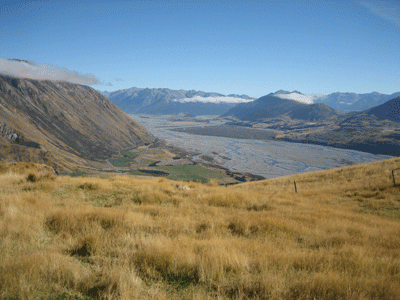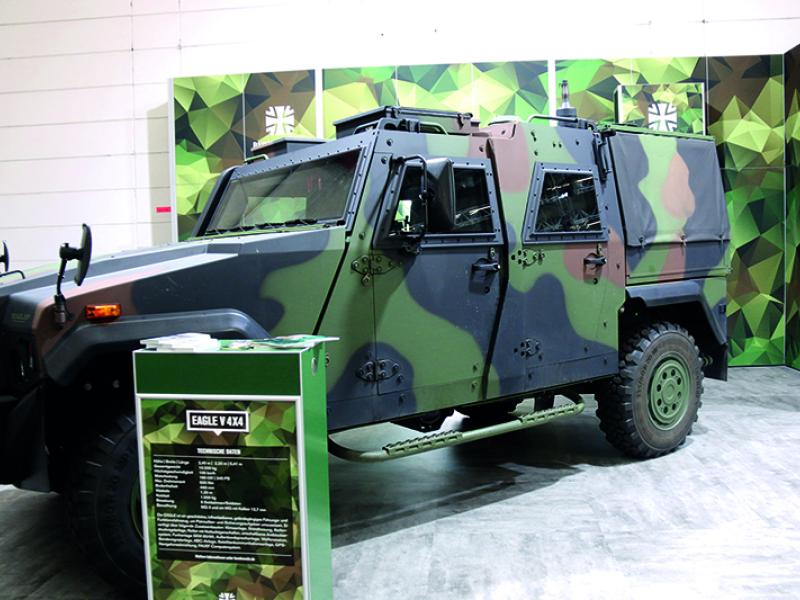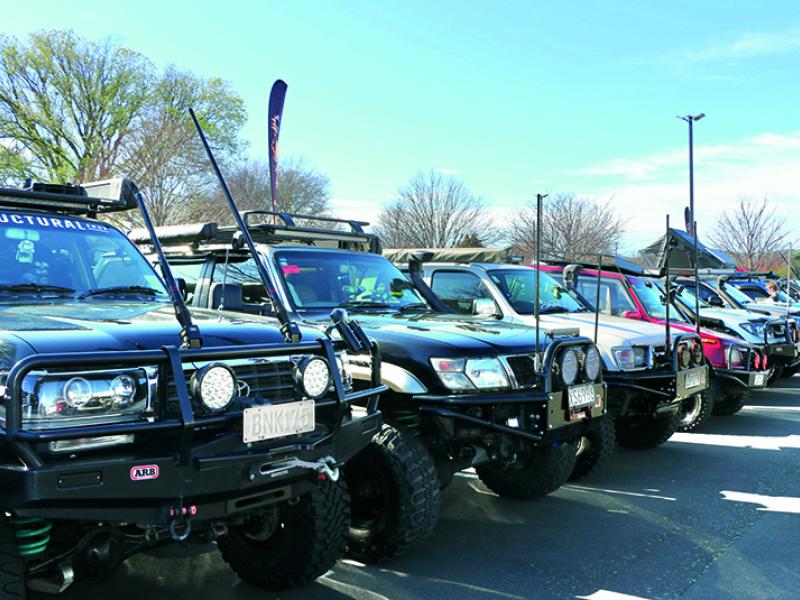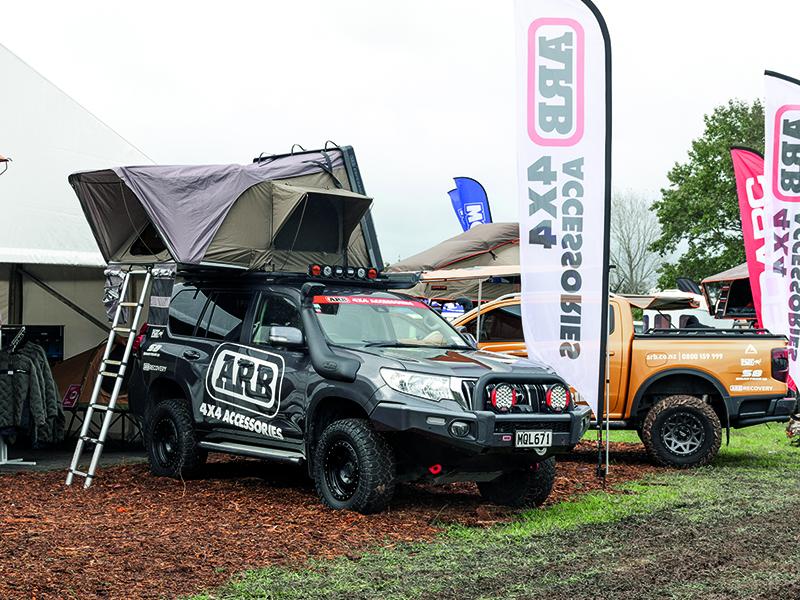This first-hand account of a memorable week in stunning Canterbury and Otago high country had us inspired to experience it for ourselves. A good mix of guided and self-guided off-road touring, with history, hospitality and home-cooked food all part of the mix.
With great excitement and anticipation, Trevor and I drove up the long shingle driveway to the home of Mike and Karen Meares in Glenroy (about an hour inland from Christchurch). We were about to embark on the second leg of our South Island adventure, the first being by push bike on the Central Otago Rail Trail. We were here to start our High Country Journey, a self-drive 4WD adventure run by Mike and Karen. We knew we were in for some special driving over the coming week, as we did a similar tour with them in 2006 (known as Station to Station Tours back then).
It was lovely to meet Mike and Karen again, and even though it was eight years since we last saw them we felt at ease with a real sense of homeliness as soon as we walked into their fabulous house. To add to the anticipation, we had asked to be teamed up on our journey with other people so we were not travelling alone on the high country tracks.
Karen had teamed us up with Bevin and Jean Bodmin from Katikati, who had also done the Station to Station trip before, and this time they brought their UK friends David and Barbara Hawgood. Also teamed up with us was Chris Palmer from Whitianga and Richard Cobden-Grainge from Titirangi, Auckland. Trevor and I are from Waihi. We all got to know each other over a lovely roast lamb dinner.
Karen gave us our journey manual full of information and directions for the next six days. It seemed quite daunting with pages and pages of kilometre by kilometre directions, complete with maps and information. However, we knew from experience that once we got on the tracks it would all make sense. We also rested easy knowing the first day was guided so we would get a practice run.
DAY 1
We started the day at 7.30am with a hearty breakfast. Noel Stanger, a local farmer, was our guide for the day. He led the way into the Lake Coleridge area in a Toyota Land Cruiser and we all followed in convoy, us in our Prado, Bevin, Jean, David and Barbara in a Pajero, and Richard and Chris in Chris’s Prado. Radios meant we could stay in touch, but they also meant Noel could tell us about points of interest along the way.
We headed up the Harper River into the mountains. It was fun criss-crossing through the braided river system, and I loved seeing the vast amounts of shingle that seemed to flow out of the mountains. It really was spectacular scenery. There was a good flow of water – all three vehicles did well and it was exciting going through the really rocky river beds. Just when we’d had enough bouncing, huge valleys would open up in front of us.
We stopped for lunch at Basin Hut, which was built as a musterer’s hut in 1974, and Richard told us we were 800m above sea level. The hut is surrounded by a forest of beech trees and an abundance of celmisia daisy. It was a lovely place for lunch and we all enjoyed our homemade door-stop sandwiches and the other tasty treats Karen had packed us.
We then headed further up the Harper River to the ‘The Pinnacles’, formed as a result of a backwater from a glacier. As the glacier retreated, the backwater formed into a small lake. Eventually the river cut down into the valley floor, the side of the lake eroded and the lake drained. As the lake bed eroded the pinnacles developed. They really are incredible, like nothing we had seen before.
On the way home Noel took the group to the head of Lake Coleridge to see the canal system put in to manage the water flow from the Wilberforce River into Lake Coleridge. The water is needed for the Coleridge Power Station, New Zealand’s oldest. It was a nice way to finish off a fantastic day in the mountains.
DAY 2
Before we got on the road, Karen sat the group around the table so we could discuss the journey ahead of us – the pitfalls, how to use the manual, tips about our hosts, how to manage weather and changing conditions. It really was a very thorough briefing, with journey safety in mind for us all.
We then set off in convoy behind Noel, who would guide us on the first track before we took over to find our own way using the manuals.
We followed Noel up the south side of the Rakaia River on a gravel road, crossing numerous small streams, with huge mountains on the left and the massive river bed on the right. The first track was on Redcliffs Station and is only available to High Country Journeys guests. Noel left his Land Cruiser at the bottom and jumped into our vehicle to guide the group. It was really foggy and all of the drivers found the steep track quite challenging with a bit of white knuckle syndrome for the passengers as well.
We stopped for a welcome coffee break at Mackintosh’s Hut on Blackhills Station, still with fog surrounding us. The highest point of the track so far was 990 metres.
At the end of the track we ran Noel back to his vehicle and then we were on our own. We headed further up the road to Glenfalloch Station and the Lake Stream track. This track was relatively easy compared to Redcliffs, as it winds its way along the side of the mountain and through a river valley rather than climbing up onto a ridge line. We stopped for lunch after crossing a huge shingle slide; the sun was out and below us we could see the upper reaches of the Rakaia River. Today was completely different scenery, which is amazing considering that, as the crow flies, we were not far away from where we went the day before. We stopped for afternoon tea at Lake Heron just as the sun came out.
We reached Staveley about 5pm, and because we were a bigger group we would be split between two hosts for the night. Chris and Richard headed to their accommodation and the rest of us were welcomed to Birchlands Farmstay with Lorna and Alan Dent. We all enjoyed our very hospitable hosts in their lovely home, the comfortable rooms and a lovely three course dinner.
DAY 3
The next morning the sun was out as we headed down the road to meet Chris and Richard. There was an option in our manuals of driving into the Peel Forest area and the Peel Forest church (which was damaged in the September earthquake) first this morning, which Bevin and crew decided to take. Richard, Chris and ourselves opted to go straight to the first track in the manual.
We arrived at the Orari Gorge Station and the start of the next track by 10.45am, and again were stuck by how different the scenery was – this time we were surrounded by willow trees. You can’t access this land easily, and four-wheel drive means we can see just how diverse and varied the New Zealand high country is.
This track was spectacular as it wended up Andrews Stream and down the other side. We picked our way along a rock face into which Mike had carved the track using a rock breaker on his digger and a bit of sheer determination. I was really glad about the metal on the edge of the track, which dropped off sharply. There were some nice river crossings, but we did lose our direction a couple of times.
The last track of the day was on Clayton Station, which is only accessible by High County Journeys. This offered an amazing climb and we were in low range the whole way. The views from the ridgeline were breathtaking as we looked across high country tussock lands as far as the eye could see. By 4pm we had descended nail-bitingly down into the valley.
DAY 4
We set off the next morning to traverse a track from the Fairlie basin into the Hakataramere basin. Bevin, Jean, David and Barbara decided to go off sightseeing at Mt Cook rather than doing the tracks, so it was just the two Prados for the day.
The track involved a really steep climb to 1,550 metres, but it is worth it with fantastic 360 degree views. The fog rolled in while we worked our way along the ridgeline, but we did manage to catch a glimpse of Mt Cook. Views down onto Lake Benmore were simply stunning, and we were really glad we’d already done the harder track.
Trevor and I reflected on the group as we descended. As we learned more about Bevin and Jean we saw what amazing people they are. Both of them are in their early eighties and here we are at 65 – I hope at their age we can be doing what they are. It just proves that 4WD trips like this provide a way for all ages to into the mountains.
As we descended we met a group of motorcyclists coming up. Some of their group were not too happy, finding it a struggle to navigate the wheel ruts as they climbed up the track. Once we got to the bit of track they’d struggled with we could see why, and it provided a fun little challenge for us at the end of the day.
We reached our next hosts, Heather and Frank Houston, at Danseys Pass. The Houstons’ house was a lovely old historic homestead with beautifully restored, huge rooms and wonderful history.
DAY 5
The next day started out sunny but a bit cooler as there had been rain overnight. Today was going to be guided by John Mulholland, a local Maniototo farmer. It was nice to think we didn’t have to concentrate so hard on finding our way and could sit back and enjoy the scenery.
The Dome Hills track, from Danseys Pass to the Maniototo basin, was interesting – a bit boggy in some areas but nothing too concerning. The expansive views were spectacular. The highest point of the day was 1,622 metres.
At the end of the day John took us to the local pub in Naseby for a beer and then we went to watch some curling. We reached our next hosts, Bryan and Val McSkimming, in Ranfurly at 6.15pm. We settled into our rooms before enjoying a fabulous dinner and dessert. All the lovely meals and generous packed lunches were doing mischief to our waistlines.
DAY 6
John came back to see us after breakfast to discuss the track options for the day, as there were quite a number to choose from. We decided to do a track that would take us from Clyde to Bannockburn and then the Nevis Valley track. The Clyde to Bannockburn was a nice track with some good views of Cromwell and the surrounding mountains.
Nevis Valley track was great for its history, as there is the old but well-preserved gold mining settlement. Mike and Karen had a lot of interesting information on the Nevis track in the manual. The track was really busy and we met a lot of traffic, a sharp comparison to what the rest of the journey had been like. We met some young guys who had been playing in the river and got themselves stuck; Chris was only too happy to lend a hand and pull them out.
Our last night was spent in the Ben Brae Resort. It was a really nice way to end with the group being able to sit down have a drink and a lovely meal together and reflect on our journey. We all agreed it was a fabulous trip, and it was special that three groups of different ages and genders had joined together to share the experience in an amazing part of the world.
The food throughout was wonderful; there was always a lovely homemade picnic to enjoy on the tracks with plenty of morning and afternoon tea treats. We felt very welcome in all of the hosts’ homes, and I really enjoyed the fact that, even as a passenger, I was involved in the adventure and not just there for the ride.







